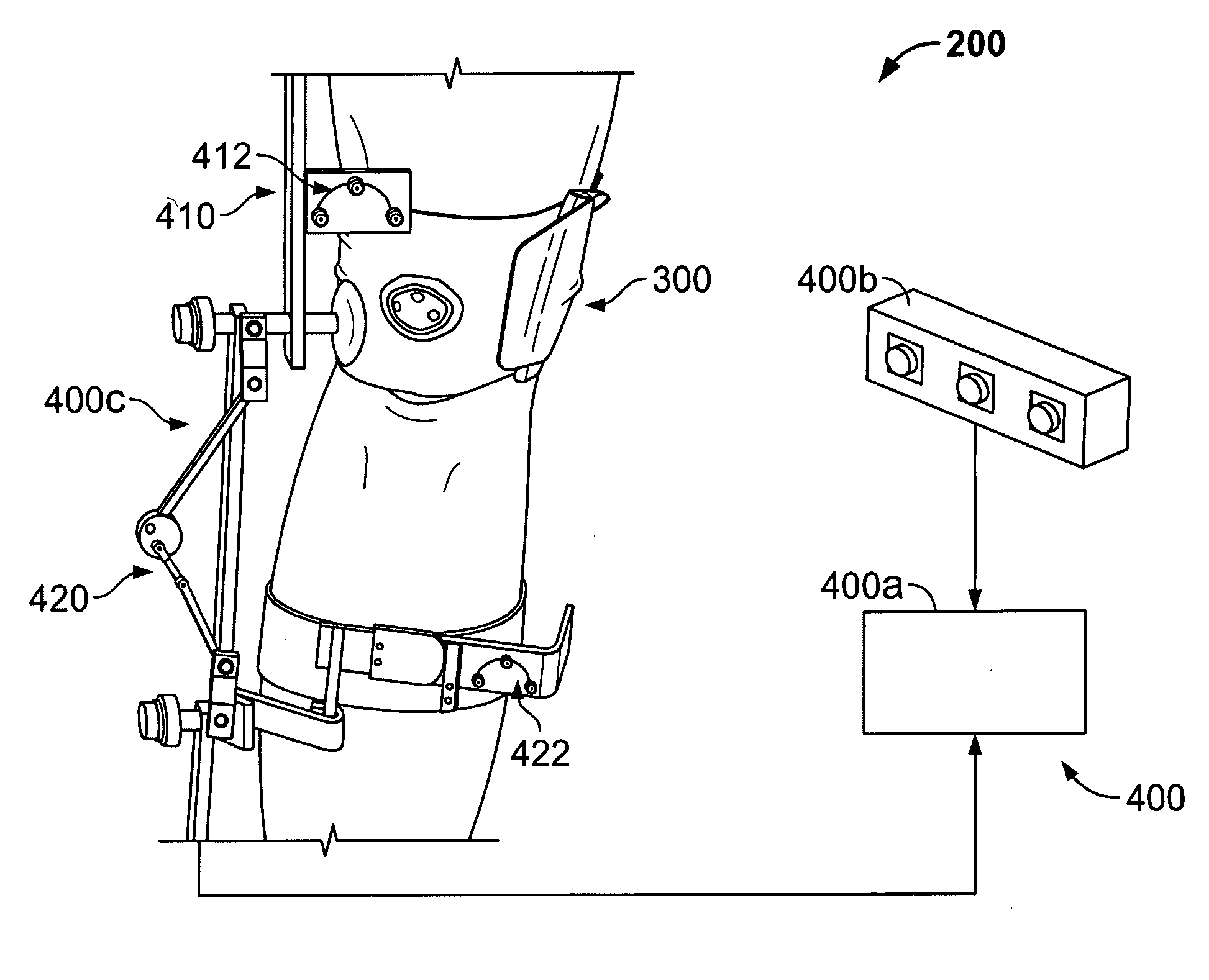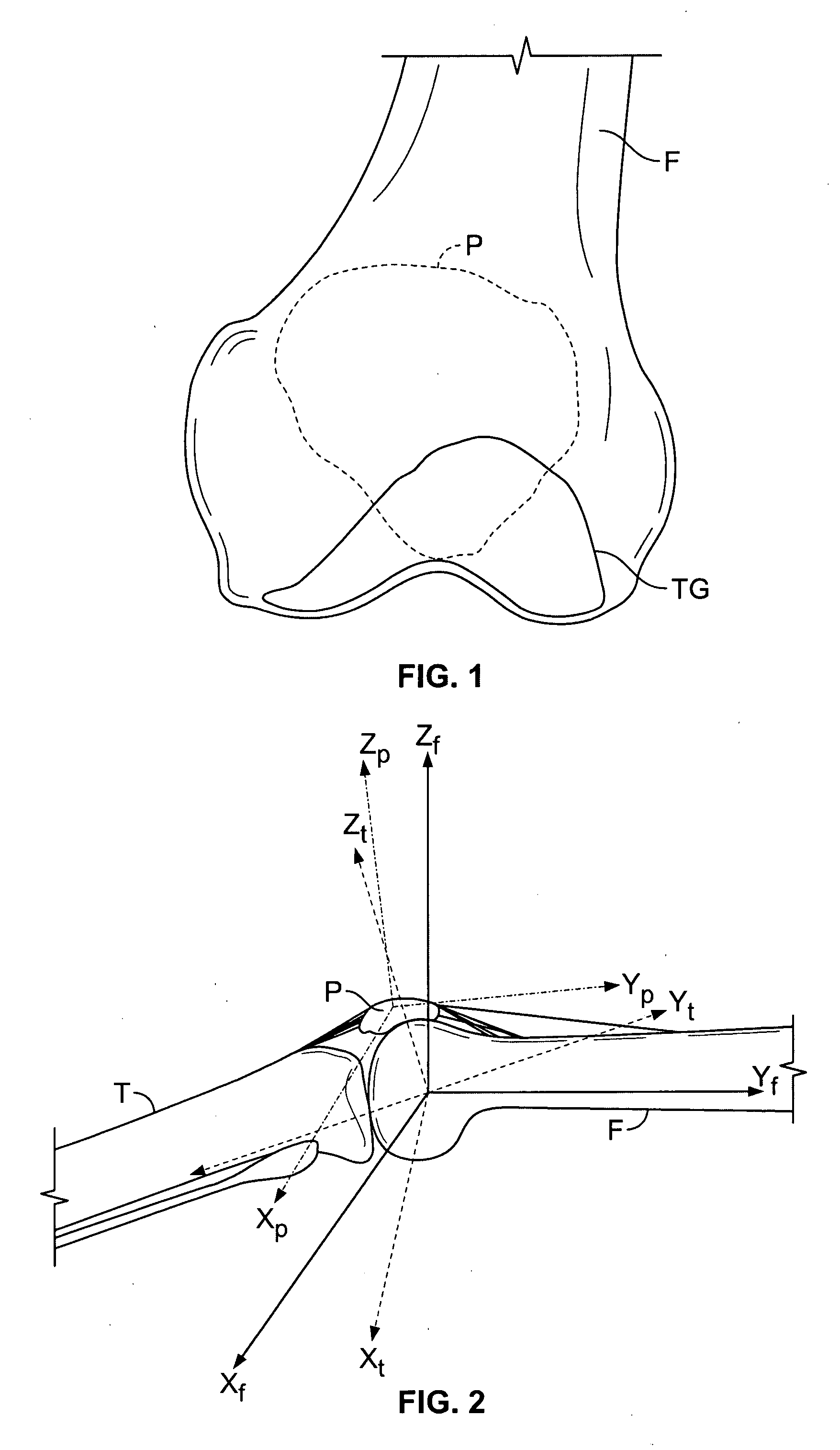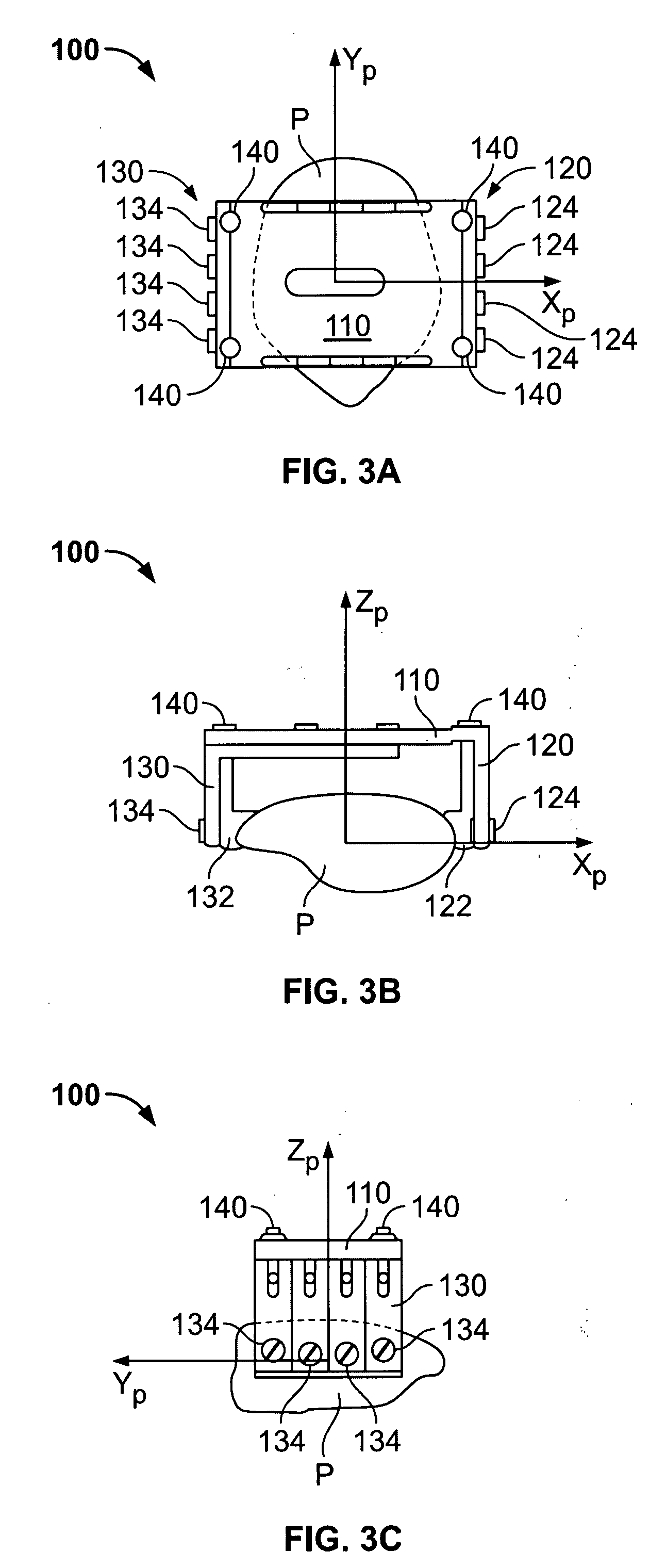System and method for diagnosing and treating patellar maltracking and malalignment
a patellar maltracking and malalignment, non-invasive technology, applied in the field of medical diagnostic and treatment systems and methods, can solve the problems of lack of accuracy, repeatability and reliability, and inability to use practical, cost-effective methods and systems, so as to improve the functionality of the patella and achieve accurate and repeatable diagnosis.
- Summary
- Abstract
- Description
- Claims
- Application Information
AI Technical Summary
Benefits of technology
Problems solved by technology
Method used
Image
Examples
example 1
[0042]Using the OptoTrak® 3020 (available from Northern Digital, Inc. of Waterloo, Canada) for digitization and tracking measurements, three-dimensional patellar kinematics was assessed in 8 healthy volunteers (TABLE 1-HS) and 5 volunteers with PFP syndrome (TABLE 1-PFP). After each subject was custom-fitted with the foregoing-described patella-engaging apparatus 300, subjects were asked to stand upright with feet shoulder-width apart while bony landmarks surrounding the knee were digitized. Then, each subject was asked to perform a series of squat maneuvers to self-selected depth (>90°) while patellofemoral kinematics were recorded. Results are summarized in the following table and illustrated in FIGS. 8a and 8b.
TABLE 1MedialMedialRotationLateralTilt (°)(°)Shift (mm)KFAHSPFPHSPFPHSPFP 0°0.370.311.872.630.25−0.0215°2.181.502.430.582.00−0.0230°3.322.302.64−1.570.78−0.4445°3.523.132.34−4.620.011.6860°3.083.892.32−6.71−1.174.2775°2.513.663.09−8.51−2.834.3290°−0.662.584.77−9.14−6.142.6...
PUM
 Login to View More
Login to View More Abstract
Description
Claims
Application Information
 Login to View More
Login to View More - R&D
- Intellectual Property
- Life Sciences
- Materials
- Tech Scout
- Unparalleled Data Quality
- Higher Quality Content
- 60% Fewer Hallucinations
Browse by: Latest US Patents, China's latest patents, Technical Efficacy Thesaurus, Application Domain, Technology Topic, Popular Technical Reports.
© 2025 PatSnap. All rights reserved.Legal|Privacy policy|Modern Slavery Act Transparency Statement|Sitemap|About US| Contact US: help@patsnap.com



